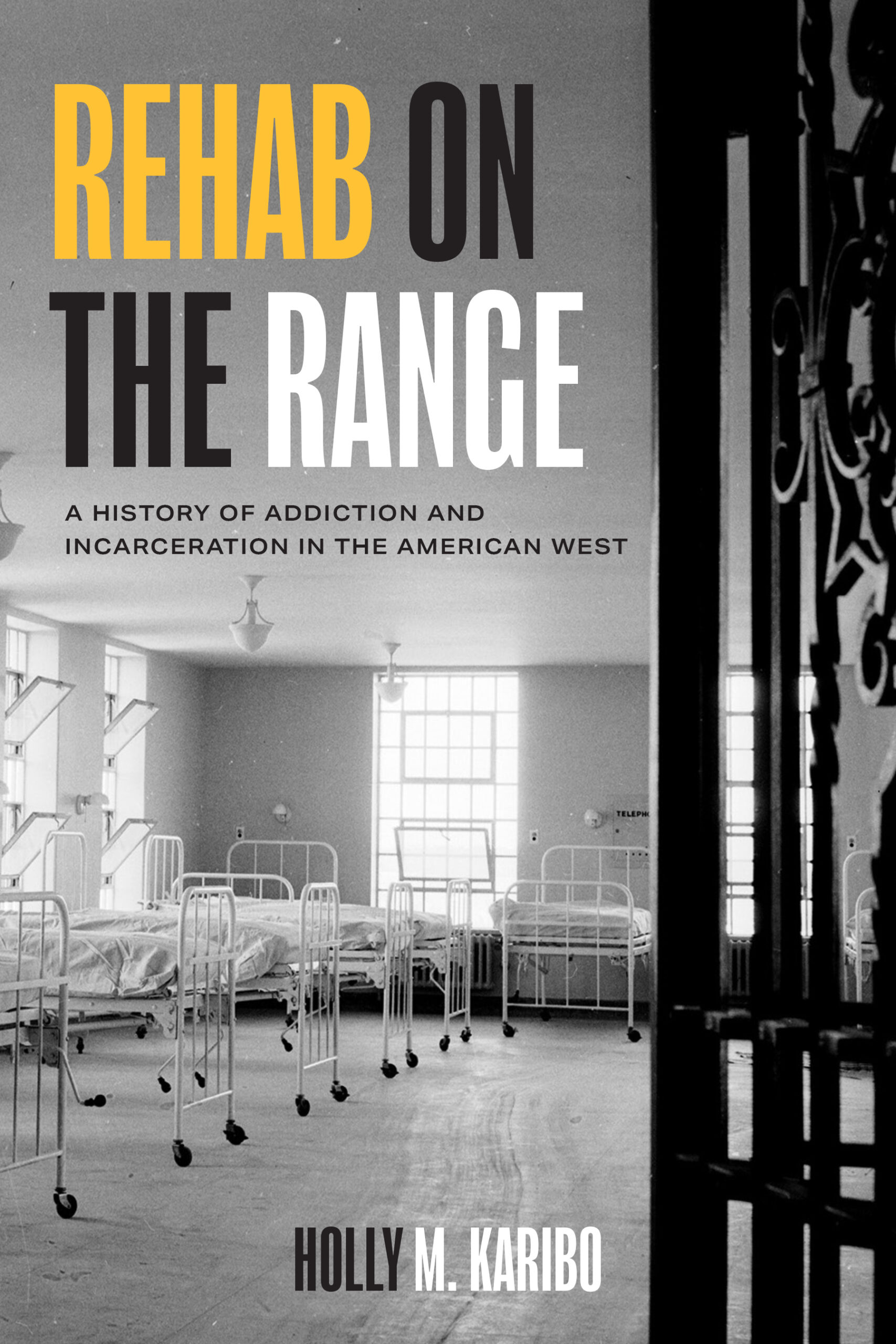Texas’ history of addiction treatment can be seen as a dance in place: public opinion swings, the Legislature takes one step forward, then two political steps back. Ultimately, little progress is made. Today’s attitudes aren’t dissimilar to the century-old ones described in historian Holly M. Karibo’s new book, Rehab on the Range: A History of Addiction and Incarceration in the American West (University of Texas Press, November 2024).
As Karibo acknowledges in her introduction, the book’s many historical arguments “will likely sound very familiar to twenty-first century readers.” Moral panic about opiates and the shifting demographics of drug users. Doctors withholding care out of very real fear of legal retribution. Fierce disagreements over whether addiction is a medical, legal, or societal issue.
She lays out a detailed institutional history of one experimental rehab center in Texas, a place meant to be a “radical reimagining of the nation’s approach to addiction.” Plans for the center drummed up “unyielding optimism that this new program would provide a modern fix to a modern problem.”
But the Fort Worth experiment ultimately left a complicated legacy.
In the early 20th century, new federal drug prohibition laws were reshaping the societal and penal landscape. It’s against this backdrop that Texans took a central role in the attempt to balance punishment with treatment for the growing percentage of the U.S. population addicted to drugs.
“THIS EXPANSIVE INSTITUTION WAS ULTIMATELY MIRED IN THE NATION’S COMMITMENT TO INCARCERATION.”
In 1931, the burgeoning oil city of Fort Worth scored a massive federal investment in the form of an experimental “narcotic farm”—a setup meant to provide novel addiction treatment to people in a quasi-carceral setting.(Though Karibo argues there’s no such thing as “soft incarceration”—especially when any unauthorized attempt to leave could land you in prison.)
This farm and its sister institution in Kentucky treated volunteer patients struggling with addiction, as well as people sent there because of run-ins with the law. The creation of these facilities constituted “one of the longest-running and most expansive federal experiments in drug addiction treatment in the nation’s history,” Karibo writes. What set the Fort Worth facility apart from older clinics was its focus not just on physical detox, but on psychotherapy as a treatment for addiction. The facility also followed the playbook of Texas prisons by using manual farm labor as a dubious rehabilitation tool.
The Fort Worth center was supposed to resemble a college campus, rather than a prison. It promised good food, a calm environment, and stability. But Karibo writes this expectation “vastly differed from what many patients experienced.”
Rehab on the Range emphasizes the context of the nation’s long churn treating and penalizing drug use while simultaneously zooming in on the details and key players in Fort Worth’s narcotic farm experiment, which finally ended in the 1970s after three decades of tumult.
Exhaustively researched, Karibo’s work at times reads like an academic treatise, at times like investigative journalism. She pored over testimonials, reports, and patient demographic data to pluck out stories and trends that highlight the humanity within the walls of these facilities.
It’s also a sometimes painfully familiar look at the uphill battle for progressive—if flawed—drug policies.
When the Fort Worth facility opened in 1938, efforts were made to train incoming staff on how to treat people with addiction as patients, not prisoners, even if they had been sent there based on a criminal penalty or transferred from a prison. Karibo writes that its high-ranking medical personnel were “deeply concerned that preconceived stereotypes about addicts would undermine the effectiveness of the treatment program.” But the training did not eliminate deeply held biases among both patients and staff, the book states. The roots of the stigma ran deep, creating cracks in the experiment from the outset.
 (UT Press)
(UT Press)The political landscape in which such experiments take place largely determines how successful they can be. In the case of the Fort Worth Narcotic Farm, the post-World War II surge of the international drug trade coincided with a waning of political support for treatment and a shift toward punitive laws, including minimum sentences for drug crimes. In 1957, Karibo writes, the Texas Legislature voted unanimously to support the death penalty for selling drugs to minors.
That’s a familiar rallying cry: In 2024, Donald Trump called for the death penalty for drug traffickers while on the presidential campaign trail.
The cycle of increasing punitive policies boosts the population of incarcerated people with addiction issues. Karibo writes that as more people were locked up for drug crimes in the early 20th century, people blamed them—and their assumed moral failures and character flaws—for increased federal prison unrest, largely ignoring that the general increase in the incarcerated population was stretching the physical limits of prisons and staff. The idea of establishing federal drug treatment facilities was a pressure release valve for prisons disguised as a progressive policy.
“This expansive institution … was ultimately mired in the nation’s commitment to incarceration as a solution to the ‘drug problem,’” she concludes.
Drug use proliferated in the Fort Worth facility, as it does in Texas prisons today. Rehab on the Range outlines the factors that kept people addicted even in treatment. Paltry guard pay created incentives for staff to help funnel drugs inside for a price. Dubious treatment techniques boosted animosity and hopelessness among patients. Complete isolation from the pressures of the outside world—and a lack of meaningful follow-up care—often led to relapse upon release.
Rehab on the Range intelligently describes one of the nation’s first and largest experiments in federally funded drug treatment, examining it within a century-long context of public and legal attitudes toward addiction. Karibo looks critically at all stages of the experiment: conception, execution, patient experience, external challenges. She includes voices of supporters and of critics.
Fundamentally, this book reveals how the United States—and Texas—has long struggled to understand its own attitudes about drug addiction. Do we blame or help those who become addicted? Do we focus on punitive policies or expanding social and medical services? What role do our prisons play?
These questions were already being asked 100 years ago, and we’re still waiting for answers.
The post Inside Fort Worth’s Narcotic Farm Experiment appeared first on The Texas Observer.
 (2).png)
 4 days ago
52
4 days ago
52

/https://static.texastribune.org/media/files/181bcf6532060509724d4f206cfe7485/1005 Ted Cruz Longview MC TT 27.jpg)
/https://static.texastribune.org/media/files/0e6dfb1e0098434e760354f77d428960/03-04_Blockchain-Lead-Logo-01-v1.png)





 English (US)
English (US)